Chinese Courses for Kids
Chinese Courses for Kids
Chinese Courses for Kids
Our courses are leveled according to HSK. HSK, which stands for Hanyu Shuiping Kaoshi, is used internationally as a means to standardize Chinese language ability.
The scale ranges from HSK1 for beginners to HSK9 for learners
who have mastery of the language. At Aye Education Chinese Courses for Kids, we offer courses ranging from HSK1 to HSK6.
Beginner
Beginning Chinese 1
Beginning Chinese 2
Our courses are leveled according to HSK. HSK, which stands for Hanyu Shuiping Kaoshi, is used internationally as a means to standardize Chinese language ability.
The scale ranges from HSK1 for beginners to HSK9 for learners
who have mastery of the language. At Aye Education Chinese Courses for Kids, we offer courses ranging from HSK1 to HSK6.
HSK1
Beginning Chinese 1
Required Class Hours: 120
This introductory course is appropriate for students with little to no Chinese language background.
Here, students gain the language skills needed at the HSK1 level. Students learn Chinese through fun interactive
lessons that focus on basic language skills.

Foundational Language
Students learn the Pinyin system, which is the standard romanization system for Chinese characters.
At the same time, they learn basic Chinese characters and their meanings.

Basic Phrases
Along with Pinyin, basic Chinese characters and their meanings, students also learn simple sentence structures and commonly used phrases in daily conversation,
such as asking about people’s ages.

Basic Grammar
Our course also teaches basic grammar structures such as sentence patterns, word order, and basic particles,
which are essential for constructing basic sentences and questions.
By the end of Beginning Chinese 1 students will be able to
:
1
Understand basic Chinese pinyin.
2
Recognize basic Chinese vocabulary.
3
Recognize the names of common animals and other words related to clothes, hobbies, etc.
4
Understand simple sentences about the world around them.
5
Respond to personal questions on a variety of topics, such as their family.
6
Understand simple expressions of communication, such as greetings.
HSK1
Beginning Chinese 1
Required Class Hours: 120
This introductory course is appropriate for students with little to no Chinese language background.
Here, students gain the language skills needed at the HSK1 level. Students learn Chinese through fun interactive
lessons that focus on basic language skills.

Foundational Language
Students learn the Pinyin system, which is the standard romanization system for Chinese characters.
At the same time, they learn basic Chinese characters and their meanings.

Basic Phrases
Along with Pinyin, basic Chinese characters and their meanings, students also learn simple sentence structures and commonly used phrases in daily conversation,
such as asking about people’s ages.

Basic Grammar
Our course also teaches basic grammar structures such as sentence patterns, word order, and basic particles,
which are essential for constructing basic sentences and questions.
By the end of Beginning Chinese 1 students will be able to
:
1
Understand basic Chinese pinyin.
2
Recognize basic Chinese vocabulary.
3
Recognize the names of common animals and other words related to clothes, hobbies, etc.
4
Understand simple sentences about the world around them.
5
Respond to personal questions on a variety of topics, such as their family.
6
Understand simple expressions of communication, such as greetings.
HSK1-HSK2
Beginning Chinese 2
Required Class Hours: 120
Building off of the skills learned in the previous course, Beginning Chinese 2 continues through HSK1 vocabulary
and grammar towards more complex language found at the HSK2.

Improved listening skills
Students learn to better understand simple, everyday Chinese conversations and short paragraphs on familiar topics.

Everyday Phrases
Students also learn common phrases, such as time adverbials and learn new facts about various places in China.
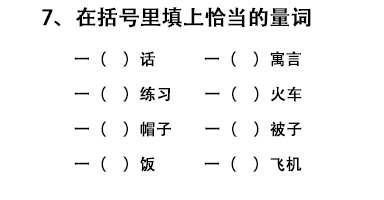
More Vocabulary and Grammar
This course also introduces students to a variety of new vocabulary and grammar,
such as the use of measure words, adjectives, adverbs, conjunctions, and question words.
By the end of Beginning Chinese 2 students will be able to
:
1
Ask questions and use fixed expressions.
2
Be able to recognize and use around 300 commonly used Chinese words.
3
Have a good understanding of basic Chinese grammar, including the use of measure words, adjectives, adverbs, conjunctions, and question words.
4
Read and understand short passages on familiar topics, including advertisements, schedules, and simple instructions.
5
Have conversations about everyday topics.
6
Write about 150 commonly used Chinese words, a few short messages or simple sentences.
HSK1-HSK2
Beginning Chinese 2
Required Class Hours: 120
Building off of the skills learned in the previous course, Beginning Chinese 2 continues through HSK1 vocabulary
and grammar towards more complex language found at the HSK2.

Improved listening skills
Students learn to better understand simple, everyday Chinese conversations and short paragraphs on familiar topics.

Everyday Phrases
Students also learn common phrases, such as time adverbials and learn new facts about various places in China.

More Vocabulary and Grammar
This course also introduces students to a variety of new vocabulary and grammar,
such as the use of measure words, adjectives, adverbs, conjunctions, and question words.
By the end of Beginning Chinese 2 students will be able to
:
1
Ask questions and use fixed expressions.
2
Be able to recognize and use around 300 commonly used Chinese words.
3
Have a good understanding of basic Chinese grammar, including the use of measure words, adjectives, adverbs, conjunctions, and question words.
4
Read and understand short passages on familiar topics, including advertisements, schedules, and simple instructions.
5
Have conversations about everyday topics.
6
Write about 150 commonly used Chinese words, a few short messages or simple sentences.
HSK2-HSK3
Intermediate Chinese 1
Required Class Hours: 120
This course focuses on improving a learner's proficiency in Chinese by building upon
their existing knowledge of basic grammar structures and vocabulary.
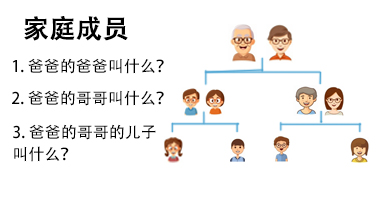
New Vocabulary
Students build on familiar concepts learned in the Beginning Chinese series, such as family, clothing,
and sports by learning more vocabulary associated with each.

Interactive Activities
The lessons in this course depart from the Beginning series by including a wider variety of activities like role plays
and spurring discussion by asking students their opinions.
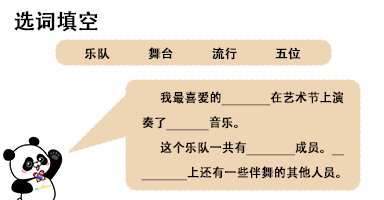
More Reading
The activities include more reading. For instance, the fill-in-the-blank activities require more advanced
reading skills in order to complete a paragraph vs. a simple sentence.
By the end of Intermediate Chinese 1 students will be able to
:
1
Use vocabulary to talk about a variety of topics, such as Chinese traditional festivals and geography.
2
Understand and use question words to respond and inquire about their surroundings.
3
Understand spoken Chinese in daily situations, such as ordering food, buying tickets, or asking for directions.
4
Understand simple written Chinese, such as signs, menus, and short passages.
5
Write simple sentences using basic grammar structures and vocabulary.
6
Have a basic understanding of Chinese grammar and be able to use common sentence structures,
such as simple verb-object and subject-predicate sentences.
HSK2-HSK3
Intermediate Chinese 1
Required Class Hours: 120
This course focuses on improving a learner's proficiency in Chinese by building upon
their existing knowledge of basic grammar structures and vocabulary.

New Vocabulary
Students build on familiar concepts learned in the Beginning Chinese series, such as family, clothing,
and sports by learning more vocabulary associated with each.

Interactive Activities
The lessons in this course depart from the Beginning series by including a wider variety of activities like role plays
and spurring discussion by asking students their opinions.

More Reading
The activities include more reading. For instance, the fill-in-the-blank activities require more advanced reading
skills in order to complete a paragraph vs. a simple sentence.
By the end of Intermediate Chinese 1 students will be able to
:
1
Use vocabulary to talk about a variety of topics, such as Chinese traditional festivals and geography.
2
Understand and use question words to respond and inquire about their surroundings.
3
Understand spoken Chinese in daily situations, such as ordering food, buying tickets, or asking for directions.
4
Understand simple written Chinese, such as signs, menus, and short passages.
5
Write simple sentences using basic grammar structures and vocabulary.
6
Have a basic understanding of Chinese grammar and be able to use common sentence structures,
such as simple verb-object and subject-predicate sentences.
HSK3-HSK4
Intermediate Chinese 2
Required Class Hours: 120
This course is designed for students who have a good grasp of basic Chinese grammar and vocabulary,
and are able to communicate effectively in a range of everyday situations.
Covers a range of topics such as study at school, travel and shopping.

More Everyday Situations
Learn to understand and respond to spoken Chinese in a range of everyday situations, including social interactions,
travel, and school study-related scenarios.

Advance Your Chinese Skills
Students also learn more of the nuances of the Chinese language,
such as students need to pay attention to words that are often used together in phrases and idioms.
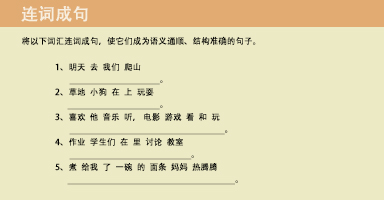
Challenging Activities
Students encounter more challenging activities to reinforce their understanding of these new concepts.
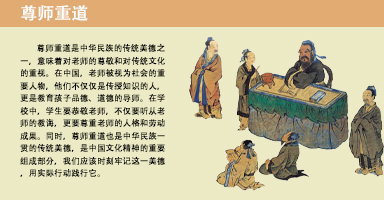
Build Overall Language Proficiency
This includes developing Students ability to understand and use Chinese in context,
to communicate effectively in a variety of situations, and to develop a deeper understanding of Chinese culture and society.
By the end of Intermediate Chinese 2 students will be able to
:
1
Ask questions about school activities, such as classroom assignments.
2
Understand instructions given by a teacher in the classroom.
3
Discuss solutions to various problems and be able to arrive at a solution.
4
Understand and use complex grammar, such as comparative and conditional sentences.
5
Read Chinese texts, such as news articles or short stories.
6
Express their opinions on a variety of topics.
HSK3-HSK4
Intermediate Chinese 2
Required Class Hours: 120
This course is designed for students who have a good grasp of basic Chinese grammar and vocabulary,
and are able to communicate effectively in a range of everyday situations.
Covers a range of topics such as study at school, travel and shopping.

More Everyday Situations
Learn to understand and respond to spoken Chinese in a range of everyday situations, including social interactions,
travel, and school study-related scenarios.

Advance Your Chinese Skills
Students also learn more of the nuances of the Chinese language,
such as students need to pay attention to words that are often used together in phrases and idioms.

Challenging Activities
Students encounter more challenging activities to reinforce their understanding of these new concepts.

Build Overall Language Proficiency
This includes developing Students ability to understand and use Chinese in context,
to communicate effectively in a variety of situations, and to develop a deeper understanding of Chinese culture and society.
By the end of Intermediate Chinese 2 students will be able to
:
1
Ask questions about school activities, such as classroom assignments.
2
Understand instructions given by a teacher in the classroom.
3
Discuss solutions to various problems and be able to arrive at a solution.
4
Understand and use complex grammar, such as comparative and conditional sentences.
5
Read Chinese texts, such as news articles or short stories.
6
Express and write their opinions on a variety of topics.
HSK4-HSK5
Advanced Chinese 1
Required Class Hours: 120
This course focuses on advanced Chinese language skills, including grammar, vocabulary, and communication.
Students learn to deeply understand Chinese grammar, including complex sentence structures, conjunctions, and different verb tenses.
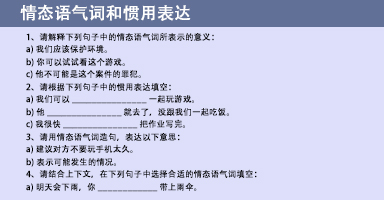
Advanced Grammar Rules
Students learn advanced grammar rules, such as the use of modal particles and idiomatic expressions.

Wide Range of Vocabulary
This course teaches a wide range of vocabulary, including both common and academic terms.
Students learn to recognize and use complex vocabulary related to a variety of topics, including politics, economics, and culture.
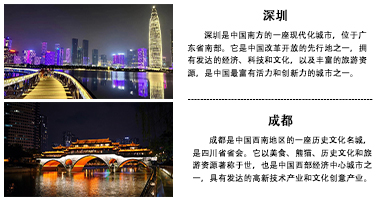
Chinese Cities
Students also learn about famous cities in China. These lessons give students the opportunity
to learn more vocabulary in context with activities that challenge students to create their own
narratives.
By the end of Advanced Chinese 1 students will be able to
:
1
Communicate effectively in both spoken and written Chinese.
2
Understand more Chinese culture and society, including history, literature, and contemporary issues.
3
Use new vocabulary to read and understand new information about Chinese cities.
4
Be proficient in reading Chinese newspapers, magazines, and other texts related to daily life and study.
5
Possess a vocabulary of around 2,500 Chinese words, including commonly used idioms and phrases.
6
Have a basic understanding of Chinese culture, customs, and social norms,
and be able to use appropriate language and behavior in different social situations.
HSK4-HSK5
Advanced Chinese 1
Required Class Hours: 120
This course focuses on advanced Chinese language skills, including grammar, vocabulary, and communication.
Students learn to deeply understand Chinese grammar, including complex sentence structures, conjunctions, and different verb tenses.

Advanced Grammar Rules
Students learn advanced grammar rules, such as the use of modal particles and idiomatic expressions.

Wide Range of Vocabulary
This course teaches a wide range of vocabulary, including both common and academic terms.
Students learn to recognize and use complex vocabulary related to a variety of topics, including politics, economics, and culture.

Chinese Cities
Students also learn about famous cities in China. These lessons give students the opportunity
to learn more vocabulary in context with activities that challenge students to create their own
narratives.
By the end of Advanced Chinese 1 students will be able to
:
1
Communicate effectively in both spoken and written Chinese.
2
Understand more Chinese culture and society, including history, literature, and contemporary issues.
3
Use new vocabulary to read and understand new information about Chinese cities.
4
Be proficient in reading Chinese newspapers, magazines, and other texts related to daily life and study.
5
Possess a vocabulary of around 2,500 Chinese words, including commonly used idioms and phrases.
6
Have a basic understanding of Chinese culture, customs, and social norms,
and be able to use appropriate language and behavior in different social situations.
HSK5-HSK6
Advanced Chinese 2
Required Class Hours: 120
The final course teaches students to understand and use complex Chinese expressions and idioms, as well as their ability to write and speak fluently and effectively.
It covers a range of topics such as politics, economics, science and technology, and culture,
and requires learners to be able to read and comprehend various forms of texts, including articles, reports, and literary works.

The Nuances of Chinese Language and Culture
This includes idiomatic expressions and the use of proverbs, allusions, and metaphors in communication.

Using Chinese in Complex Situations
Students learn to use the Chinese language in complex situations, such as reading and comprehending academic
articles or engaging in debates on various topics.

Engaging Questions
In Advanced Chinese 2, discussion questions help engage students with the subject matter by tapping into their own opinions and experiences.
By the end of Advanced Chinese 2 students will be able to
:
1
Master around 1800 Chinese characters, over 5000 commonly used Chinese words, including complex and idiomatic expressions.
2
Have a good understanding of advanced Chinese grammar structures, including complex sentence patterns, conjunctions, and prepositions.
3
Understand subtle nuances and idiomatic expressions, and be able to identify key information and main ideas.
4
Read and comprehend various forms of texts, including articles, reports, and literary works.
5
Write fluently and accurately using advanced vocabulary and grammar structures.
6
Speak fluently and accurately in different situations, such as formal presentations, debates, and conversations.
HSK5-HSK6
Advanced Chinese 2
Required Class Hours: 120
The final course teaches students to understand and use complex Chinese expressions and idioms, as well as their ability to write and speak fluently and effectively.
It covers a range of topics such as politics, economics, science and technology, and culture,
and requires learners to be able to read and comprehend various forms of texts, including articles, reports, and literary works.

The Nuances of Chinese Language and Culture
This includes idiomatic expressions and the use of proverbs, allusions, and metaphors in communication.

Using Chinese in Complex Situations
Students learn to use the Chinese language in complex situations, such as reading and comprehending academic
articles or engaging in debates on various topics.

Engaging Questions
In Advanced Chinese 2, discussion questions help engage students with the subject matter by tapping into
their own opinions and experiences.
By the end of Advanced Chinese 2 students will be able to
:
1
Master around 1800 Chinese characters, over 5000 commonly used Chinese words, including complex and idiomatic expressions.
2
Have a good understanding of advanced Chinese grammar structures, including complex sentence patterns, conjunctions, and prepositions.
3
Understand subtle nuances and idiomatic expressions, and be able to identify key information and main ideas.
4
Read and comprehend various forms of texts, including articles, reports, and literary works.
5
Write fluently and accurately using advanced vocabulary and grammar structures.
6
Speak fluently and accurately in different situations, such as formal presentations, debates, and conversations.